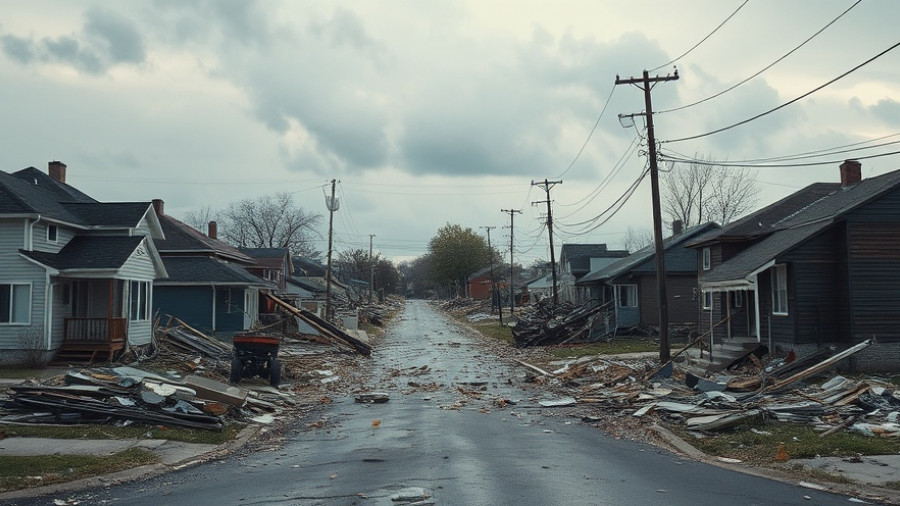
Climate Change Threatening Our Medical Supplies
In recent years, devastating weather events such as hurricanes, floods, and fires have underscored the vulnerability of the pharmaceutical supply chain in the United States. When Hurricane Helene struck last fall, it claimed over 150 lives and wreaked havoc on critical medical manufacturing facilities, particularly a key plant producing intravenous (IV) fluid bags. Such shortages put immense pressure on hospitals, as seen in the case of Baxter International Inc., which had no choice but to ration their limited supply, directly impacting patient care.
The Rising Risk of Pharmaceutical Disruption
A concerning finding from a recent study published in JAMA highlights that almost two-thirds of U.S. drug production sites are located in regions that have experienced severe weather-related disasters in recent years. This encompasses everything from hurricanes to wildfires, with the paper warning that climate change is increasing the likelihood of extreme weather patterns significantly disrupting pharmaceutical manufacturing. As the Trump administration attempts to bolster American drug production, these natural disruptions pose a crucial challenge for safeguarding public health.
Lessons from Previous Hurricanes
Hurricane Maria in 2017 initiated a wake-up call for the pharmaceutical industry, particularly when it disabled Baxter’s saline solution manufacturing operations in Puerto Rico. Due to a lack of backup facilities, the storm compounded existing supply shortages in hospitals. In response, Baxter has made investments to enhance their resilience by expanding production capabilities, including FDA-approved operations outside the U.S. Still, the lessons remain clear: without robust contingency plans, medical supply vulnerabilities can endanger healthcare delivery.
Industry Collaboration to Tackle Supply Shortfalls
The pharmaceutical industry isn't navigating these challenges alone. Organizations like PhRMA emphasize collaboration with government entities to mitigate shortages and ensure a steady supply of medical necessities. Yet, the new research indicates a lack of available data on how frequently these catastrophes lead to tangible shortages, suggesting that as climate-related disasters become more frequent, pharmaceutical firms must adapt rapidly to secure production pipelines.
Future Predictive Models for Emergency Preparedness
As the threat of climate change continues to loom, industry analysts predict that pharmaceutical disruptions will become a regular concern. Enhanced risk assessment models that consider geographic vulnerabilities will need to become a standard part of emergency preparedness. This will help not only in planning resilient supply chains but also in advising hospitals and healthcare providers on maintaining access to essential medications.
Realignment of Manufacturing Strategies
With nearly 40% of finished medications and approximately 80% of active pharmaceutical ingredients being imported, the U.S. faces resource dependencies that could exacerbate during climate crises. As the demand for domestic production rises, the formulation of comprehensive strategies is vital in buffering against potential supply shocks.
Empowering Community Awareness
Understanding the interplay between climate change and drug supply shortages is crucial. Community awareness can spur necessary discussions on local health care responses during emergencies. It invites consumers to advocate for transparency in pharmaceutical manufacturing and pull back the curtain on the reliance on climate-vulnerable production sites.
Action Steps for Consumers
As residents and patients, we have a role to play in ensuring that our health systems are prepared. Staying informed about local pharmaceutical capabilities and advocating for investments in resilient infrastructures can help mitigate risks associated with climate change. Be proactive—ask healthcare providers about their contingency plans for drug availability in the wake of natural disasters.
As you reflect on the implications of climate change on health resources, consider how you can engage with your local healthcare infrastructure to promote stability and resilience. Understanding these dynamics not only safeguards individual health outcomes but also fortifies community well-being.
 Add Row
Add Row  Add
Add 




Write A Comment